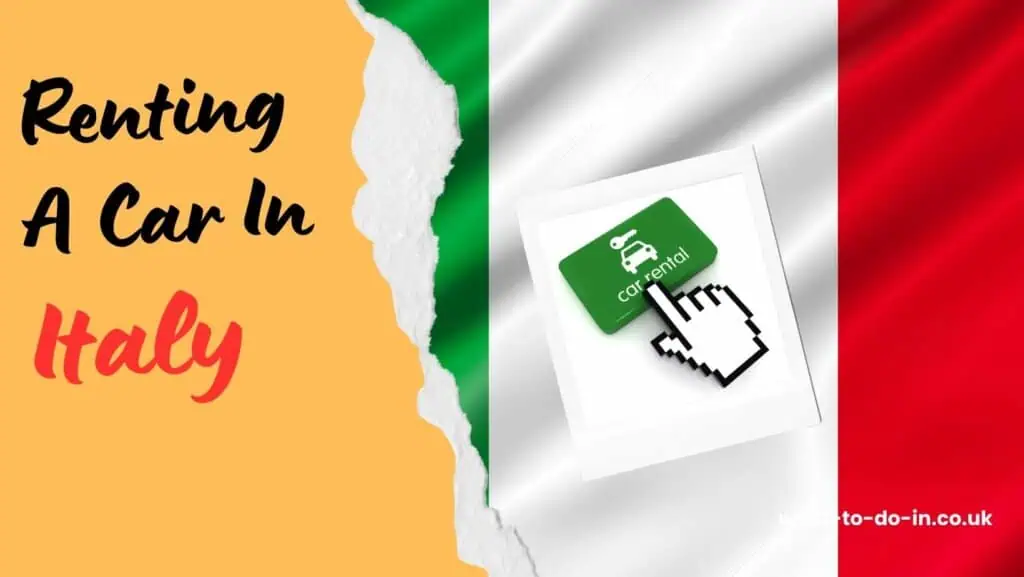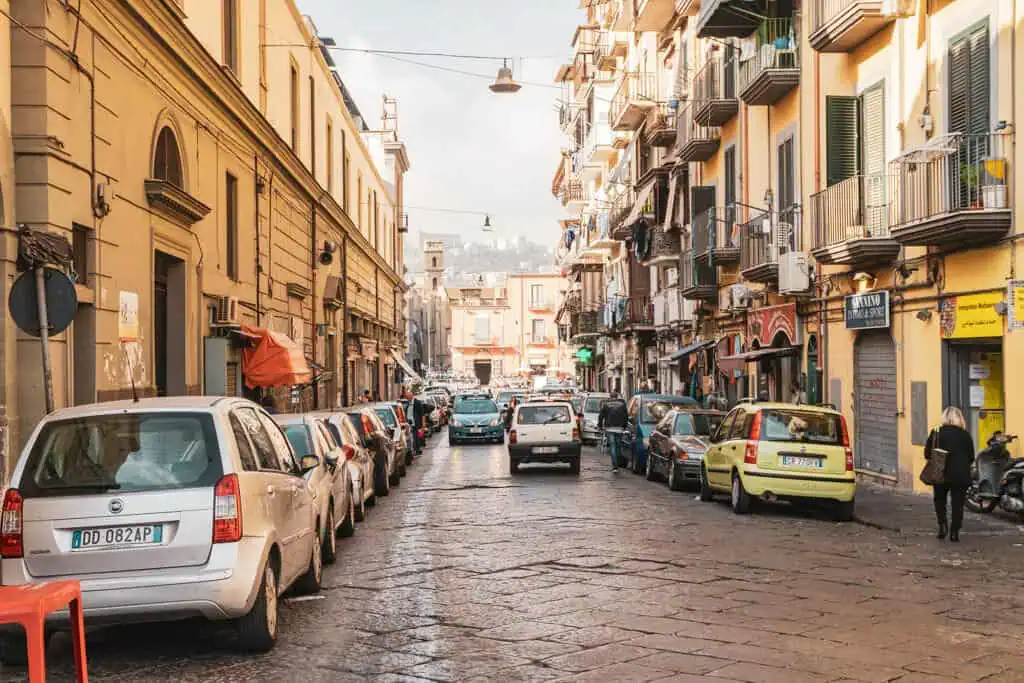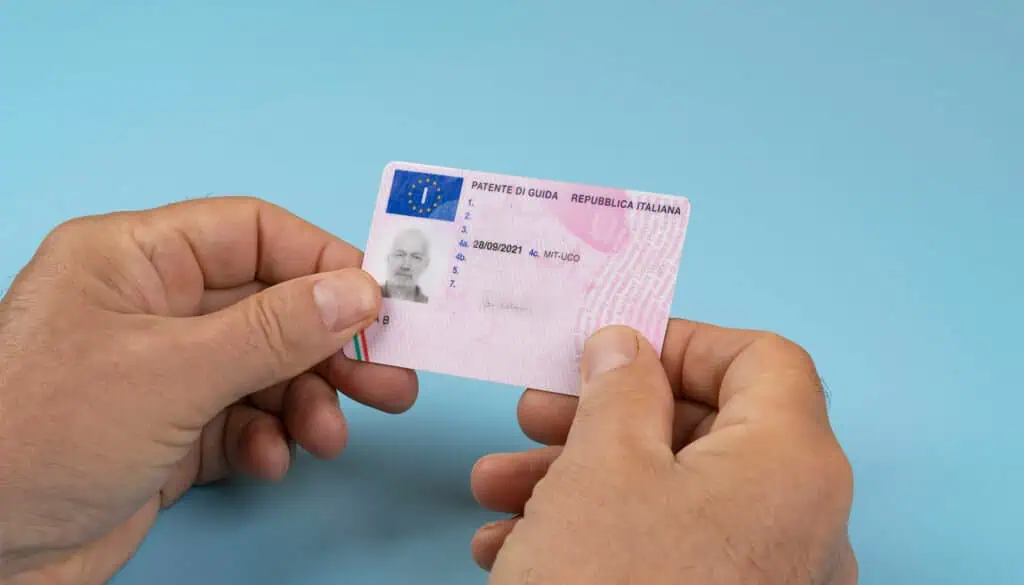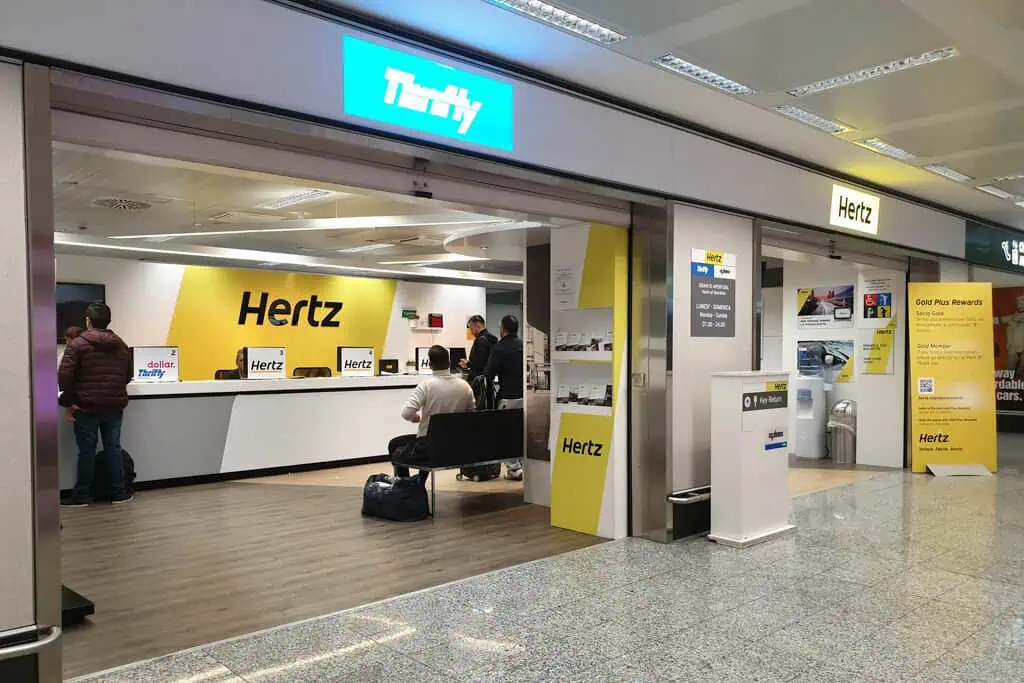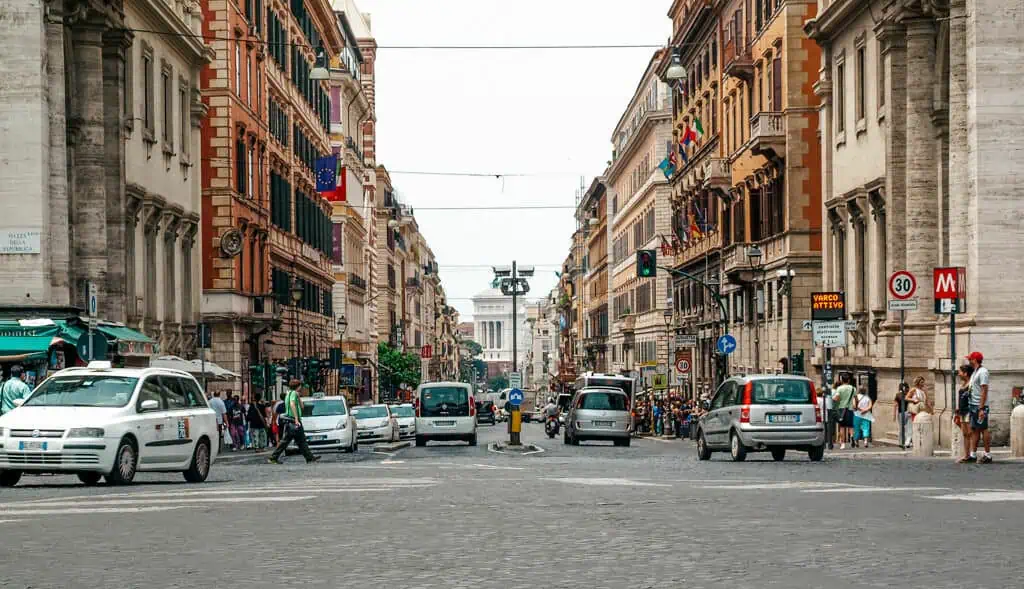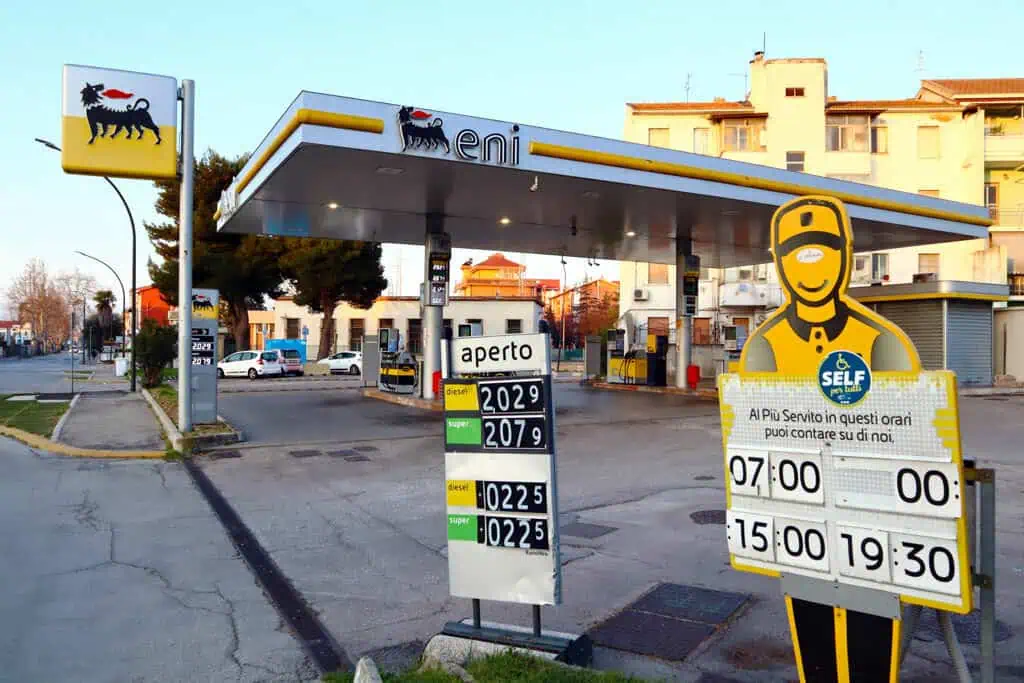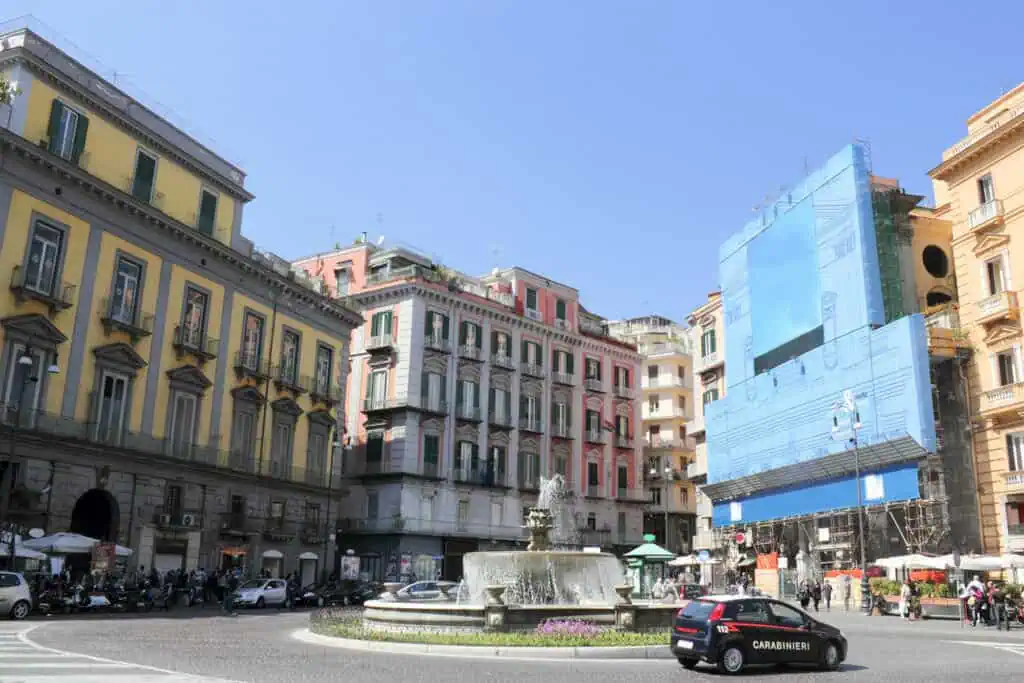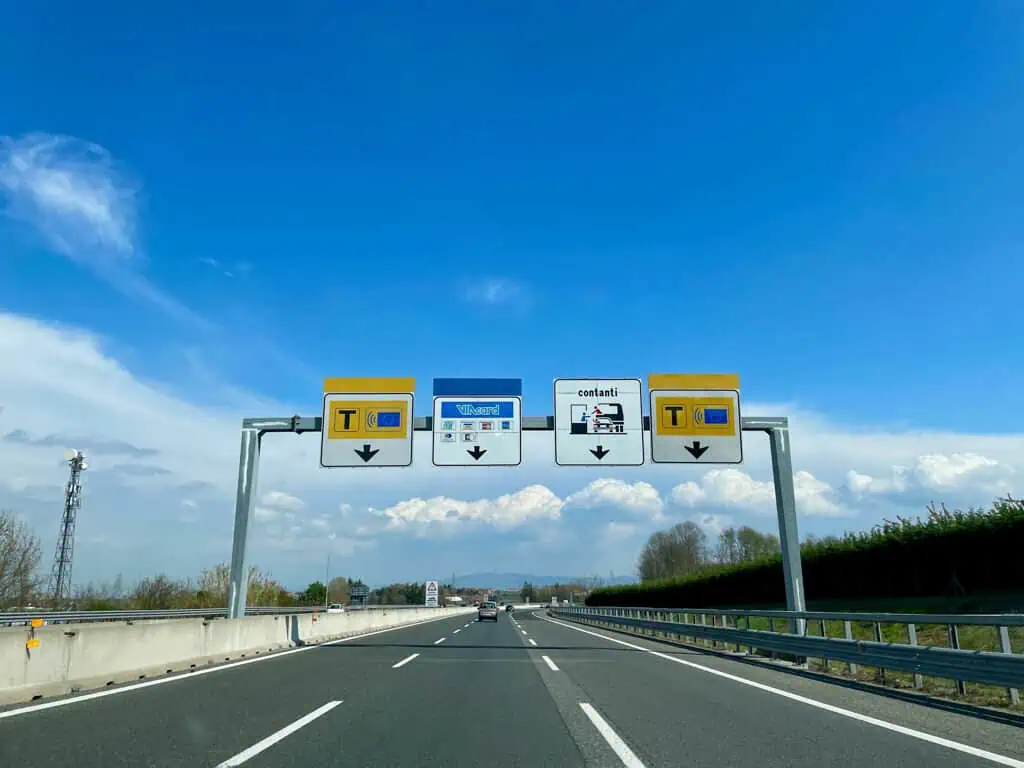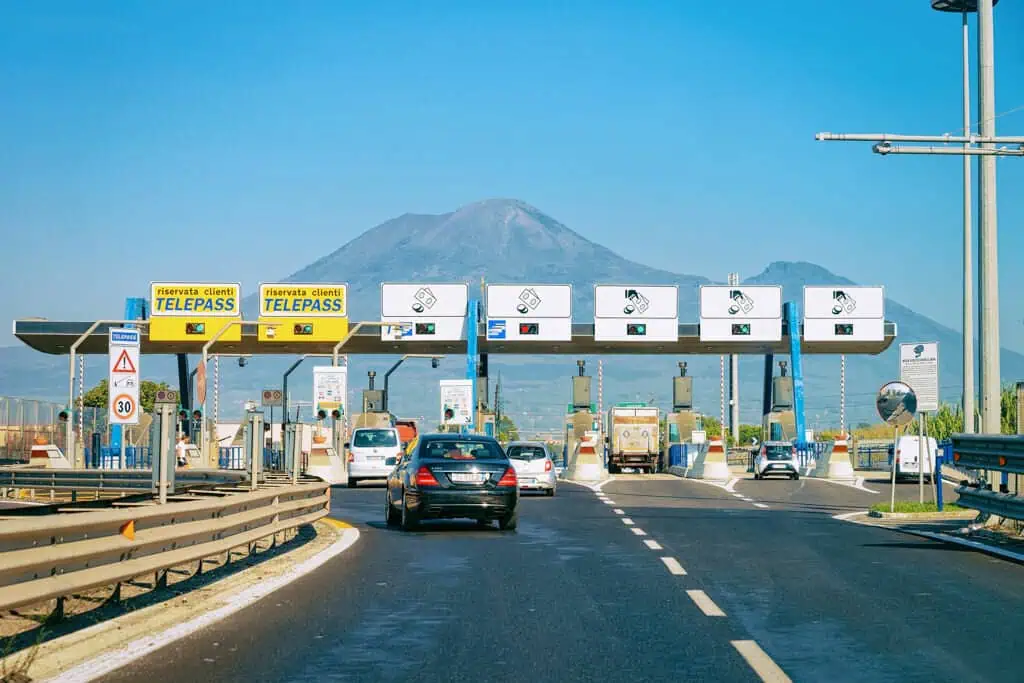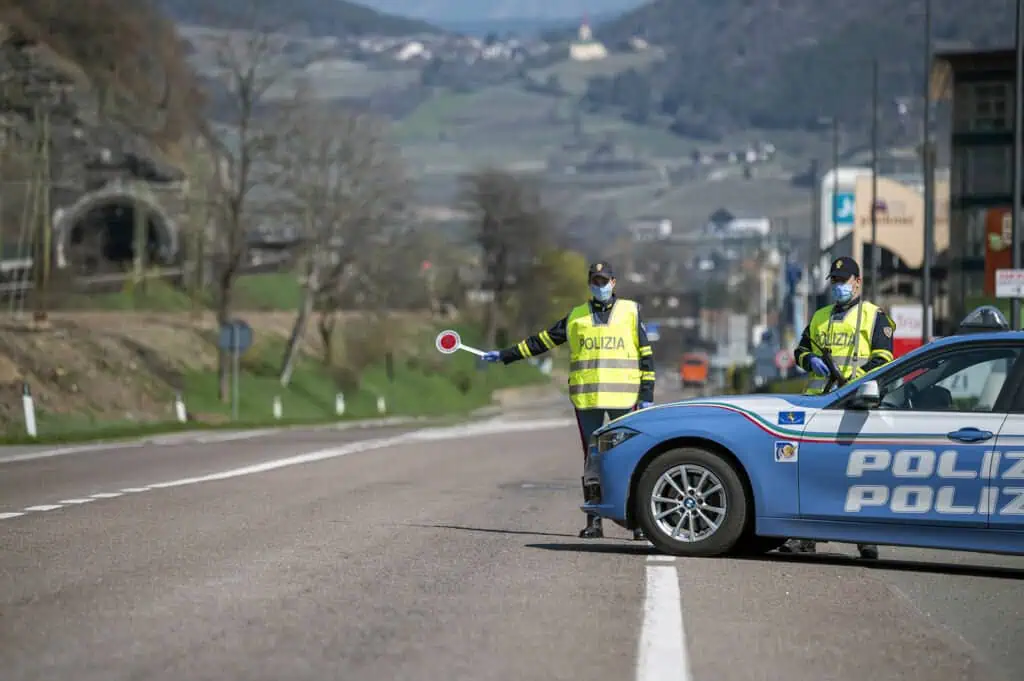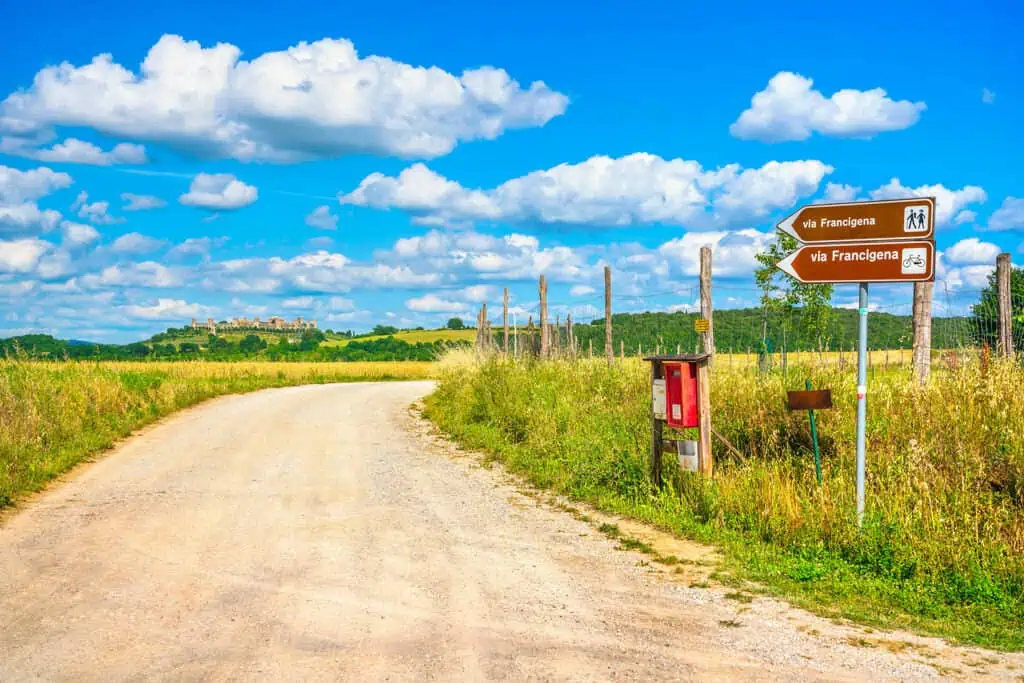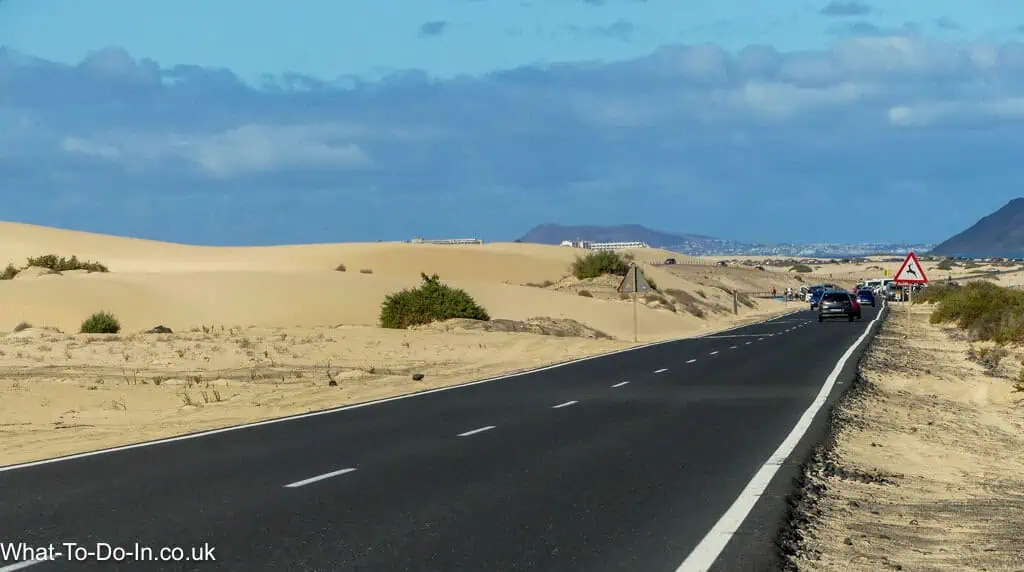Imagine the allure of the Amalfi Coast, the mystery of Rome’s ancient ruins, and the charm of Tuscany’s rolling hills — all within your reach behind the wheel of a rented car. In Italy, the freedom to explore at your own pace is highly prized by travelers, and renting a car offers just that. With over 50 million tourists visiting Italy every year, a significant number choose to navigate the picturesque country by car to fully indulge in the rich cultural tapestry that is uniquely Italian. Renting a car in Italy does not only cater to the convenience of travel; it also opens doors to off-the-beaten-path adventures, allowing visitors to indulge in the depth of Italy’s regional diversities, from the northern lakes down to the southern coastlines. Whether it’s a sleek convertible for a coastal drive or a compact car for city-hopping, understanding the practicalities of car rental is essential to embarking on an Italian road trip that promises both freedom and excitement.
Why Rent a Car in Italy?
From the sun-kissed vineyards of Tuscany to the breathtaking Amalfi Coast, Italy is a country that beckons to be explored at one’s own pace. My husband Aidan and I have traversed this beautiful landscape and can vouch for the unparalleled freedom that comes with renting a car. You’re no longer tethered to train schedules or tour groups; you can meander through quaint villages, pause for an impromptu wine tasting, or simply pull over to soak in the stunning panoramas that greet you at every turn. Italy’s diverse regions are like individual masterpieces, and a car becomes your personal gallery pass, allowing you to appreciate each one thoroughly. Dive in to our subsequent sections as we elaborate on finding the best deals, navigating Italian roads, and uncovering hidden gems that make renting a car in Italy not just a convenience, but a quintessential element of the true Italian adventure.
What Size Rental Car: Big or Small?
When traveling to Italy, one of the crucial decisions you’ll have to make is the size of the rental car you choose. Both big and small cars have their advantages and disadvantages, and the decision often comes down to a balance between comfort, convenience, and the nature of your travel itinerary. Having rented both big and small cars in Italy, we’d like to share our insight on when each might be the right choice for you.
Choosing a Big Car
There are several reasons you might want to opt for a bigger car while roaming through the Italian landscapes. Comfort is likely the most obvious one. If you’re traveling with family or a group of friends, a big car will give everyone enough space to sit comfortably, along with ample room for luggage. This is particularly important if you’re planning a long road trip where you’ll spend several hours on the road, as you’ll want to make sure everyone can stretch out and relax.
Another consideration is safety. Generally, bigger cars tend to offer more protection in the event of an accident. They are also usually equipped with more advanced safety features. This can give you peace of mind while navigating through unfamiliar roads, especially if you’re not used to the aggressive driving style that is sometimes found in Italy.
However, do keep in mind that larger vehicles can be more challenging to navigate through narrow streets, particularly in historic city centers, and can be difficult to park. Also, they typically consume more fuel, which can add to your travel costs.
Opting for a Small Rental Car
On the flip side, there are many compelling reasons to choose a smaller car for your Italian road trip. First and foremost, small cars are easier to handle and maneuver, which can be a godsend in Italy, where streets can be notoriously narrow and parking spaces are often few and far between. In cities like Rome, Florence, or Milan, a smaller car can save you from a lot of stress and the hassle of finding a suitable parking spot.
Economically speaking, small cars are generally less expensive to rent and are more fuel-efficient, which can help keep your travel expenses down. This is particularly attractive for couples or solo travelers who don’t need the extra space a larger vehicle provides.
Another aspect to consider is your environmental impact. Smaller cars usually have a smaller carbon footprint, so they are a more eco-friendly choice. For those who are environmentally conscious, this can be an important factor in the decision-making process.
Lastly, driving a small car can feel more authentically Italian, blending in with the local Fiats and Alfa Romeos. This can enhance your travel experience, giving you a sense of being less of a tourist and more of a local.
Picking up your Rental Car
As seasoned travelers, we have had our fair share of experiences renting cars across the globe. Italy, with its rich history and breathtaking landscapes, has been a frequent destination for us.
Major Airports and Cities
Most of our Italian adventures begin at the major airports, where we typically pick up our rental car. We’ve rented vehicles at Rome’s Fiumicino Airport, a bustling hub that plunges you straight into the heart of Italy’s historical grandeur. On our voyage to the Renaissance city, we secured a car at Florence’s Amerigo Vespucci Airport.
In the charm-packed north, Milan’s Malpensa Airport was our gateway to the fashionable cityscape and the scenic drives of the Italian Lakes. Down south in Naples, Capodichino Airport served as our starting point for a memorable road trip along the Amalfi Coast.
Rental Desks at Airports
No matter where we have rented, we’ve been fortunate to find rental car desks conveniently located inside the airport terminals. These are usually well-signposted and easy to locate after collecting your luggage.
The staff at the rental desks in Italy are often quite amiable, embodying the warm and welcoming spirit that the country is known for. They’re generally eager to help with not only the paperwork but also offer advice on local driving rules, which has been invaluable for navigating new terrain.
City Experiences
Away from the airports, we’ve also picked up cars at various locations within major cities. For instance, in Florence, we’ve utilized rental services in the city center, which allowed us to explore the Tuscan landscape at our leisure. Similarly, in Milan, central car rental offices gave us the freedom to begin our travels without the need to navigate through airport traffic first.
Renting cars from different locations in Italy has always been a smooth process but remember, driving in Italy can be a thrilling yet challenging experience. We have found that being prepared and knowing what to expect goes a long way in ensuring a pleasurable trip.
Insurance, Excesses and CDW
When renting a car in Italy, understanding the legal requirements and options for insurance is crucial. In Italy, as in many other countries, there is a mandatory insurance known as “third-party liability insurance,” which covers damage to someone else or their property. However, this does not cover damage to the rental car itself. To protect yourself from these costs, rental companies offer various forms of additional coverage including Collision Damage Waiver (CDW) and Theft Protection (TP).
Collision Damage Waiver (CDW)
Collision Damage Waiver reduces your financial liability for any damage to the rental car, provided that the damage is not due to a breach of the rental agreement. It is important to note though that CDW often comes with an excess. The excess (also known as deductible) is the amount you are required to pay before the insurance covers the rest of the costs. For instance, if the excess is €500 and you incur €1000 worth of damage, you pay €500 and the insurance covers the remaining €500.
While CDW significantly lowers your potential expenses in case of an accident, there may still be parts of the car that are not covered, such as tires, windscreens, undercarriage, and interior. Reading the rental agreement thoroughly will clarify what is included and where you may still be exposed to costs.
Why Opt for Full Coverage?
Many travelers consider additional protection to fully cover the excess. Peace of mind is a major reason; knowing that you will not be faced with a hefty bill for minor scratches or dents allows you to enjoy your trip without constant worry. Furthermore, it simplifies the process in the unfortunate event of an accident because you won’t be embroiled in complicated insurance claims.
Always remember to read the small print of any insurance policy. You need to be clear on what you are and are not responsible for. Some rental agreements can have exclusions that might come as an unpleasant surprise if you are not prepared. By understanding your coverage fully, you can avoid disputes and additional charges at the end of your rental period.
For official information and assistance on car rental insurance requirements in Italy, seeking advice from the Italian Motor Insurance Bureau (Consap) or consulting the official European Union website’s section on car rentals may prove helpful.
Ultimately, whether to opt for additional coverage boils down to personal risk tolerance and the specifics of your trip. If your itinerary involves navigating the bustling streets of Rome or the winding roads of the Amalfi Coast, additional coverage might just be the prudent choice to ensure that your Italian adventure is not ruined by unwanted expenses.
Renting Eligibility
When traveling to Italy, you might be considering the freedom that comes with renting a car to explore the scenic countryside and historic cities. It’s important to understand that while the legal age to drive in Italy is 18 years old, those looking to rent a car will often find that rental companies require you to be older.
Minimum Age Requirements
Through our travels, my husband Aidan and I have discovered that most car rental agencies in Italy will require the primary renter to be at least 21 years old. However, it’s not uncommon for them to impose a ‘Young Driver Surcharge’ for renters under the age of 25. This surcharge is meant to cover the additional insurance risk associated with younger drivers.
Additional Rental Conditions
Beyond age restrictions, there are also other considerations to bear in mind. Renters must typically hold a full driving license for a minimum of one year. International travelers from outside the EU often need an International Driving Permit (IDP) along with their national driving license to rent a vehicle in Italy.
It is advisable to check directly with the rental agency in advance or consult reputable sources for further clarification. The Automobile Club d’Italia provides detailed information regarding driving regulations in Italy which might help to clarify the rental eligibility requirements.
For those needing to acquire an International Driving Permit, information can be found through the respective authority that issues driver’s licenses in your home country. In our case, as U.S. citizens, we referred to the American Automobile Association (AAA), which you can access through this link.
Documentation Needed to Rent a Car
When renting a car in Italy, it’s crucial to have the correct documentation in order to ensure a smooth experience at the rental desk. Below is a list of the essential documents you will typically need to provide:
Valid Driver’s License
Firstly, you must present a valid driver’s license from your country of residence. The license should have a photo ID and be in good condition so that all the information is legible.
International Driving Permit (IDP)
An International Driving Permit (IDP) is a document that many countries require, in addition to your national driver’s license, to legally drive a vehicle. In Italy, if you are a resident of a non-EU country, you will generally need an IDP. This is especially the case for those from the United States, Canada, Australia, and other countries where the driving license is not in Italian or English. The IDP translates your national driver’s license into several languages and is recognized in over 150 countries. You can apply for an IDP through national automobile associations; remember to do this well in advance of your trip.
Passport
A valid passport is typically required as an additional form of identification. Make sure it’s the same passport you used to make the booking, as rental companies will need to verify your identity.
Credit Card
Most car rental companies in Italy will require a credit card in the driver’s name for a security deposit. Ensure that the credit limit is adequate to cover the deposit which will be held for the duration of the rental period.
For additional clarity on the documentation requirements or to apply for an IDP if necessary, you can visit the Automobile Club d’Italia, which is the authoritative body on driving and road safety in Italy. Also, check with the Ministero delle Infrastrutture e dei Trasporti, which is the Italian Ministry of Infrastructure and Transport, for the most recent updates regarding traffic rules and rental regulations.
Remember to read through the terms and conditions provided by the car rental company before you arrive at the rental desk. This ensures you’re fully prepared with all the necessary documentation.
Where do I Rent a Car in Italy?
Renting a car in Italy can enhance your travel experience by providing you with the freedom to explore at your own pace. Whether you are arriving by plane, train, or already in the city center, you have several options to pick up your rental car.
At the Airport
Upon arrival at the Italian airports, you’ll find a variety of car rental companies ready to serve your needs. Agencies such as Hertz, Avis, Europcar, and Sixt have desks at the major airports like Rome’s Fiumicino or Milan’s Malpensa. These companies offer a wide range of vehicle options, from economy cars to luxury models.
At Train Stations
Many train stations in Italy, especially those in larger cities, also house car rental offices. This can be particularly convenient if you are traveling by train before you decide to rent a car. Companies like Auto Europe and RentalCars.com allow you to compare prices and book directly with car rental providers that have offices adjacent to train stations.
In City Centers
If you’re already settled in an Italian city and decide to rent a car, there are numerous local and international rental agencies throughout city centers. Smaller brands like Locauto and Maggiore offer competitive rates and can sometimes be found closer to your accommodation than airport or train station locations.
Online Rentals
Booking a car rental online before your travel to Italy is another option and can be quite advantageous. It allows you to compare prices, read reviews, and confirm the availability of the car you want, all from the comfort of your home.
Pros:
- Often, booking in advance can secure better rates.
- You’ll have a wider selection of cars to choose from.
- It reduces time spent at rental counters upon arrival.
Cons:
- You might find it challenging to amend your booking if travel plans change.
- It may include additional fees if you decide to cancel your reservation.
For online rentals, reputable websites like Kayak, Expedia, and the aforementioned RentalCars.com are good starting points. They aggregate offers from different providers, giving you an overview of what’s available and helping you find the best deal for your budget and needs.
Remember, always carefully read the rental agreement, specifically the insurance coverage and return policies, whether renting from an airport, train station, city center, or online.
Is Renting a Car in Italy Safe?
Traversing Italy’s diverse landscapes can be one of the true joys of visiting the country. Renting a car affords travelers the autonomy to explore the rolling hills of Tuscany, the rugged coastline of Amalfi, or the historic sights of Rome at their leisure. But when it comes to safety, there are a few things to consider before hitting the road.
Road Conditions in Italy
As we discovered firsthand, the condition of Italian roads ranges widely from the well-maintained Autostrade, Italy’s extensive network of toll highways, to local roads that can be a bit more of a challenge. The Autostrade are equipped with plenty of signage and are generally in excellent condition, making it fairly straightforward to travel between major cities and regions. Offers of service areas with fuel, food, and restrooms are frequent, ensuring a comfortable long-distance drive.
However, when you venture off the main highways and into the countryside, the quality of roads can vary significantly. Many country roads are narrow, winding, and sometimes steep, especially in areas like Tuscany, the Amalfi Coast, and the mountains. While these roads are generally safe, they may require a heightened sense of caution and slower speeds, especially if you are not accustomed to driving in such conditions.
Italian Driving Style
Italian drivers are known for being quite passionate and assertive on the road. They often drive fast and can be somewhat aggressive, particularly in comparison to drivers from countries where driving styles are more conservative. Expect a dynamic driving experience with local drivers that often use the horn liberally and are eager to overtake slower vehicles. Being cautious and vigilant behind the wheel is key, especially on highways where speeds can be deceptively high.
Navigating Urban and Rural Areas
Driving in Italian city centers can be quite an adventure. The streets are often narrow, crowded, and filled with scooters zipping between cars. Many historic centers in cities like Florence or Rome are restricted to local traffic only (Zona a Traffico Limitato or ZTL), and without the proper permit, entering these areas can result in hefty fines. Parking can also be a challenge, with limited spaces and strict regulations.
In contrast, small villages offer a completely different driving experience. The pace is slower, and the streets can be very narrow, sometimes allowing only one car through at a time. Patience and polite negotiation are usually required when encountering oncoming traffic in these tight spaces. Rural driving also often includes the picturesque but occasionally daunting task of navigating cobblestone streets and one-way systems that have seemingly grown organically with the ancient towns.
Renting a car and driving in Italy can certainly be safe, provided that you stay alert, adapt quickly to local driving customs, and respect the rules and limitations of the road.
Is Renting a Car in Italy Expensive?
Renting a car to explore the sprawling and diverse landscapes of Italy can be an integral part of a travel experience. My husband Aidan and I have taken numerous trips to Italy, and through these journeys, we’ve encountered a variety of costs associated with renting a vehicle.
Rental Costs
The cost of renting a car in Italy can vary widely based on several factors, such as the type of car, rental company, and the time of year. In our experiences, a basic economy car can start at around €30-€40 per day. This price can elevate quickly if you opt for additional insurance, a more prominent vehicle model, or extras like GPS or child seats. During peak tourist seasons, typically the summer months and around major holidays, rates tend to be higher.
Insurance
Insurance is an important consideration when renting a car. Basic rental agreements in Italy usually include some form of liability insurance, but many travelers choose to purchase additional coverage. Collision Damage Waiver (CDW) and Theft Protection (TP) can add €10-€30 per day to the rental cost, depending on the level of coverage desired.
Toll Roads
Italy has an extensive network of Autostrade, which are toll highways. Tolls are unavoidable when crossing through these major roads and can add a noticeable amount to driving costs. The toll price depends on the distance traveled and the type of vehicle. For example, traveling from Milan to Florence, approximately 300 kilometers, might cost around €20-€30.
Fuel Costs
Fuel costs are another significant factor to consider when driving in Italy. The price per liter of petrol is generally higher than in the United States, and it fluctuates periodically. At the time of our travels, prices were approximately €1.50 to €1.70 per liter. For a standard car with a 50-liter fuel tank, refilling from empty could cost between €75 and €85.
It is also worth nothing that many rented vehicles in Italy are manual transmission. If you require an automatic, this typically comes at a premium.
Parking and ZTLs
Parking in Italy’s city centers can be expensive and difficult to find. Rates vary from city to city and can go as high as €3 per hour. In addition, many historical city centers have restricted traffic zones (Zona Traffico Limitato, or ZTL), which can result in fines if entered without proper authorization.
It is important for travelers to budget for the various expenses incurred while driving. Whether it be the daily rental rate, insurance, tolls, fuel, or parking, these costs can accumulate and should be considered when planning a trip that includes car rental in Italy.
Renting Automatic Cars in Italy
If you’re planning a trip to Italy and considering renting a car, you may want to think about the type of transmission you’re comfortable driving. While manual (stick shift) cars are more prevalent in Europe, there are certainly benefits to choosing an automatic car, especially if that’s what you’re accustomed to back home.
The Case for Automatic Transmission
An automatic car can significantly reduce the stress of driving in a new country. Navigating the rolling hills of Tuscany or the winding roads along the Amalfi Coast is much easier when you don’t have to worry about shifting gears. This hands-off approach to driving allows you more mental space to enjoy the scenery and stay focused on the unfamiliar road signs and traffic laws.
Automatic cars are particularly useful for those who are not used to driving manual transmissions, as using a stick shift can be an added challenge, alongside the adjustment to driving on the right-hand side of the road for those coming from countries that drive on the left.
Ideal for First-Time Visitors and Busy Cities
For first-time visitors to Italy, an automatic transmission car offers a level of comfort and ease that can make the driving experience less daunting. In bustling cities like Rome, Milan, or Naples, where the traffic can be relentless, and the streets are busy with scooters and pedestrians, the last thing you want to worry about is stalling your car or struggling with clutch control.
Availability and Early Booking
While automatic cars are becoming more common, they are still less prevalent in Italy’s car rental market compared to manual cars. Because of their limited availability, automatic cars tend to sell out quickly, especially during peak tourist seasons. If you’re not comfortable with a manual transmission or you simply prefer the convenience of an automatic, it’s crucial to book your rental car well in advance. This ensures that you secure the type of vehicle that best suits your needs and avoid any complication upon your arrival.
In short, when preparing for your Italian road trip, consider your driving preferences and experience. If you value simplicity and comfort over the potentially lower rental costs of a manual car, reserving an automatic vehicle ahead of time can make all the difference in your travel experience.
Do I Need Air Conditioning
Deciding whether to opt for air conditioning in a rental car can be a significant choice, especially when traveling to a place like Italy, known for its varied climate. Throughout our travels in Italy, we faced moments when air conditioning was both a blessing and an unnecessary luxury. Below are some of the pros and cons of using air conditioning in your rental car based on our personal experiences.
Pros of Air Conditioning
- Comfort: Italy, particularly during the summer months, can get quite hot. Having air conditioning ensures a level of comfort that can make long drives in the countryside or sitting in traffic in cities like Rome or Naples much more bearable.
- Better Air Quality: The ability to close windows and utilize the AC allows you to keep out dust, pollution, and even the occasional insect that might make its way into the vehicle. This can be especially beneficial if you’re prone to allergies.
- Convenience: On days when the temperature soars, air conditioning quickly cools down the car, providing immediate relief and a refreshing environment to return to after exploring hot tourist spots.
Cons of Air Conditioning
- Cost: Often, rental cars with air conditioning come at a premium. When on a budget, you might need to weigh the comfort against the additional daily cost.
- Fuel Efficiency: Air conditioning can reduce a car’s fuel efficiency. During trips through regions with high fuel prices, this could add up and result in spending more on gas than initially planned.
- Experience: Sometimes, foregoing air conditioning can lead to a more immersive travel experience. Lowering the windows, feeling the natural breezes, and listening to the sounds of the Italian streets and countryside can enhance the sensation of truly exploring a new place.
Ultimately, the decision to choose air conditioning in a rental car while traveling in Italy depends on personal preference, the season, and the type of trip you’re planning. While driving along the Amalfi Coast with the sea breeze may not necessitate AC, touring around the Tuscan hills in mid-July could tell a different story. Consider your comfort, budget, and travel style when making this choice.
Italy Driving Etiquette
Traveling through Italy can be an exhilarating experience, with its stunning landscapes and rich culture. However, it’s crucial to understand the local driving etiquette to ensure a smooth and enjoyable journey. Here’s what you can expect on the roads of Italy and some tips to help you adapt to the local driving practices.
Understanding the Right of Way
In Italy, the right of way at intersections is often determined by a hierarchy of road types. Typically, vehicles on the larger road will have priority over those on smaller roads. However, you should always be prepared for the unexpected, as not all drivers strictly adhere to this rule. Look out for the “dare la precedenza” (give way) and “stop” signs to know when to yield.
Overtaking and Lane Discipline
Italian drivers are known for their assertive driving style, especially on highways (autostrade) and major roads. Be aware that on multi-lane roads, the left lane is primarily used for overtaking. It is common for drivers to flash their headlights as a signal that they intend to overtake. After you have passed another vehicle, it’s courteous to return to the right lane as soon as it’s safe to do so.
City Driving
Driving in Italian cities can be challenging due to narrow streets and heavy traffic. Keep an eye out for Zona Traffico Limitato (ZTL) areas where access is restricted to authorized vehicles only. Accidentally driving into a ZTL can result in hefty fines. Parking can also be tricky; only park in designated areas and be aware of the color-coded lines: white for free parking, blue for paid parking, and yellow for disabled parking or special use.
Speed Limits and Cameras
Italy is equipped with a robust system of speed cameras, so it’s crucial to abide by the speed limits: 50 km/h in urban areas, 90 km/h on secondary and local roads, 110 km/h on non-major highways, and 130 km/h on the autostrade, weather permitting. Speed limits are reduced in wet conditions.
Interactions with Other Drivers
Expect some level of impatience from Italian drivers, particularly in the south where the pace of driving can be aggressive. Horns are frequently used, not always out of frustration, but often to alert other drivers, especially on winding roads with limited visibility.
Motorcycles and Scooters
Be mindful of the many motorcycles and scooters weaving in and out of traffic. They tend to move quickly and can sometimes appear without much warning, so it’s essential to double-check mirrors and blind spots, especially before changing lanes or turning.
Remember, when in Italy, as with any country, the best approach is to drive defensively, stay alert, and be considerate of local driving customs.
Fuel and Rest Stops
Traversing through the scenic landscapes of Italy, one needs to stay mindful of fuel and rest stops. Understanding the refueling nuances can ensure a smooth and delightful journey across this magnificent country.
Understanding Italian Fuel Types
In Italy, petrol stations offer various types of fuel, which are distinctly marked but might be different from what travelers are accustomed to in their home country. Here are the primary options you’ll find:
- Benzina: This is the Italian term for unleaded petrol or gasoline.
- Gasolio or Diesel: If your rental is a diesel engine, this is the fuel you need to look for.
- GPL: Short for “Gas di Petrolio Liquefatto,” this refers to Liquefied Petroleum Gas or autogas.
- Metano: This is compressed natural gas (CNG), not commonly used for mainstream rental cars but worth noting.
Rental Car Fuel Requirements
Before you begin your journey, make sure to confirm the type of fuel required for your rental car. This is crucial as filling up with the incorrect fuel can lead to a costly and time-consuming error. Typically, the fuel type is indicated on the fuel cap or inside the rental agreement. When in doubt, do not hesitate to ask the rental agent for clarification. It’s also wise to learn the Italian terms for each fuel type to avoid confusion at the station.
Locating Fuel Stations
Fuel stations, or “stazioni di servizio,” are abundant in Italy, particularly along the Autostrade (highways), where you can effortlessly find full-service stations offering fuel, food, and restrooms. It’s worth noting the following:
- Autostrada Services: Stations on the highway are open 24/7, but prices tend to be higher due to the convenience.
- Urban & Rural Areas: In cities and towns, stations have more competitive rates but observe regular working hours and may close for a mid-afternoon break. Always check the operating hours to avoid getting stranded.
In less urbanized areas, it’s advisable to plan your refueling stops as stations may be sparser. Thanks to modern technology, GPS and various mobile apps can assist in locating the nearest station.
Using Italian Fuel Stations
Here are some quick tips for a hassle-free experience:
- Self-Service vs Full-Service: Stations may offer self-service (fai da te) or attendant service (servito). Self-service is usually cheaper, and instructions are often available in multiple languages.
- Payment Options: Most stations accept credit cards and cash, but be prepared with cash in more remote areas.
- Receipts: Always collect your receipt, especially if you’re using a company card or need to track expenses.
Remember, fueling your car offers the perfect opportunity to take a break, stretch your legs, and perhaps indulge in some local snacks often available at rest stops. Italian auto-grills, located on highways, are famous for offering a variety of good quality food and coffee – a welcome respite from driving!
Parking
In Italy, parking can be quite a challenge, especially in big cities and historic towns. From what we have experienced during our travels, parking is not only difficult to find but can also be quite expensive. Usually, the cost of parking will vary greatly depending on the location – whether it’s in a large city, a small town, or the outskirts.
Parking in Cities and Historic Towns
In major Italian cities like Rome, Milan, and Florence, as well as in many historic towns, parking spaces are often scarce. Most of these areas have limited parking zones known as ‘Zona Traffico Limitato’ (ZTL), which are restricted to non-residents. This means that you can only park in designated areas, typically marked by blue lines, where you’ll need to purchase a ticket from a nearby machine or sometimes through an app.
The cost of parking in these areas can be surprising. For example, parking in central Rome for an hour could cost you anywhere between 1 to 3 euros, but this can increase rapidly the longer you stay. In historic towns, you might find some free parking spaces, but these are usually located quite far from the center and fill up quickly.
Parking outside the town/city and using public transport
One of the strategies we found useful was parking outside the town or city where the rates are significantly lower and sometimes even free. Large parking lots or garages on the outskirts can be a cost-effective choice, and often you will find convenient public transport links, like buses or trains, to take you into the city center. Not only does this save money on parking, but it also avoids the stress of driving in densely packed historical centers that are not designed for modern traffic.
On-Street Parking
Finding on-street parking in Italy can be tough, particularly in busy areas. It’s usually regulated by color-coded lines: white lines indicate free parking (which can be rare and usually quite crowded), blue lines denote paid parking areas (with varying rates), and yellow lines are reserved for special vehicles or permit holders. Always check the signs before you leave your car since parking regulations and schedules may change. For example, some areas are free of charge during the evening and on Sundays. However, make sure to move your vehicle before the paid hours commence, or you risk getting a fine.
Overall, parking in Italy requires some planning. Making use of apps and online resources to find and even reserve a parking spot can save a lot of time and hassle. It’s always advisable to check ahead with your accommodation as they often provide parking facilities or have deals with local car parks, potentially offering discounted rates for their guests.
Driving in Italian Towns
If you have ever entertained the idea of exploring Italy’s charming towns by car, you have considered embarking on an adventure that is as thrilling as it is unique. Navigating the narrow, winding streets that meander through these picturesque localities presents a distinctive set of challenges and rewards.
Navigating the Narrow Streets
In quaint Italian towns, the streets often tell stories of the past, with their medieval layouts and historic structures lining the way. These narrow passageways, designed long before the invention of cars, can be quite intimidating to drive on. It’s not uncommon to find yourself on a one-way street that feels barely wide enough for a single vehicle, let alone two-way traffic. One reassuring fact is that the locals maneuver these streets with a certain artful precision, which can be inspiring to witness and learn from.
Embracing Local Driving Etiquette
Understanding and embracing the local driving culture is key to successfully navigating small Italian towns. Patience and vigilance are indispensable qualities, as local drivers often communicate with a language of beeps, flashing lights, and hand gestures. As you drive, you’ll notice the spontaneous, fluid nature in which Italians approach their daily commutes, an approach that is born from familiarity and finesse.
The Role of Modern Technology
One cannot overstate the advantages of utilizing a sat nav or GPS system while driving in these environments. Sat nav can be a real sanity-saver when it comes to identifying the best routes through the labyrinthine streets. It provides real-time traffic updates, alternate route options, and can guide you through the less well-trodden paths that might otherwise go undiscovered. The reassurance of having a GPS navigate for you allows you to enjoy the stunning views and the unique character of Italian towns without the stress of getting lost.
Parking Peculiarities
Parking is another aspect where technology can be immensely helpful. Finding a parking spot can often feel like looking for a needle in a haystack. However, contemporary solutions like parking apps and updated sat nav systems can guide you to available spaces. Remember to always check the parking regulations in the area to avoid fines.
Exploring Italian towns by car is a rewarding experience that offers an unfiltered glimpse into the heart of Italy’s culture. While challenging at times, the advent of sat nav and GPS technology has smoothed the way for adventurers who dare to take on the cobbled streets and vibrant squares, one turn at a time.
Drive on the Right
Embarking on a road trip through Italy can be an exhilarating experience, with picturesque landscapes and historical sites at every turn. However, for those accustomed to driving on the left, it poses a unique set of challenges and considerations. Upon arriving in Italy, one of the most immediate adjustments we had to make was getting comfortable with driving on the right side of the road. This shift not only affects the side of the road on which you drive but also alters the driver’s seat position within the car and the way one interacts with traffic controls and other vehicles.
Adjusting to a New Perspective
When you’re used to the driver’s seat being on the right, sitting on the left can feel a little disorienting at first. The gear shift and handbrake are on your right, and the rearview and side mirrors require a different line of sight. It’s crucial to take some time to familiarize yourself with the vehicle’s controls and dimensions before hitting the road. This helps in creating the necessary muscle memory for things like shifting gears and interpreting the car’s boundaries from a new position. Additionally, overtaking on the highway now happens on the left, which can take some time to get used to.
Navigating Intersections and Traffic Signals
Intersections might present a bit of a puzzle initially, particularly when you’re used to looking right then left before proceeding. In Italy, with traffic coming from the opposite direction, a quick mental reminder to look left then right is a good habit to adopt. Traffic signals and signs are oriented for right-side driving, so pay close attention to ensure you’re following them correctly. Especially watch out for ‘no entry’ and one-way street signs, which might be easily overlooked from the unfamiliarity of the right-hand driving perspective.
Roundabout Etiquette
Roundabouts, or ‘rotatorias’, are commonplace in Italy and are generally navigated in a clockwise direction, with traffic entering from your left and drivers already in the roundabout having the right of way. It’s important to signal your intentions clearly when entering and exiting the roundabout. If you’re used to roundabouts in a left-driving country, reminding yourself that you’ll be going right around the circle, instead of left, is vital to avoid any confusion. Approaching with caution and giving priority to the left as you enter will keep you safe and respectful of local traffic laws.
Staying Vigilant and Adapting to Local Driving Styles
Lastly, it’s essential to stay vigilant and adapt to the local driving style. Italian drivers are known for being assertive, especially within bustling city centers and on high-speed motorways like the Autostrada. Keep an eye on your mirrors and be prepared for other drivers to overtake you more frequently than you may be used to. The key here is to remain calm, give clear signals for your maneuvers, and maintain a steady pace with the flow of traffic. Being mindful of the differences, staying alert, and adapting as you go will make the transition to driving on the right side a smooth part of your Italian adventure.
Motorways in Italy
Driving on the motorways, or “autostrade,” in Italy can be quite an experience. The network is expansive, linking major cities to smaller towns and regions with efficiency and speed. Italian motorways are typically well-maintained and offer some stunning views of the countryside, coastal areas, and historical cities along the way. However, they are also known for their fast-paced driving style, with locals often driving significantly over the speed limit, which can be daunting for visitors.
Overview of Italian Motorways
The autostrade are punctuated with service areas that provide opportunities to refuel, grab a bite to eat, or just take a break from the journey. These stops are quite frequent and offer a good level of comfort and a variety of services. Drivers should be aware that tolls are common on Italian motorways. These can be paid in cash or by card at the toll booths, or by using an electronic system like the Telepass, which allows drivers to pass through without stopping.
Major Motorways
Italy’s motorways are identified by the letter ‘A’ followed by a number. The numbering system is fairly logical, but it might take some time for first-time visitors to get the hang of it. Some of the major motorways in Italy include:
- A1 – Autostrada del Sole (Motorway of the Sun): The A1 is perhaps the most famous of Italy’s motorways, running from Milan in the north down to Naples in the south, passing through the scenic regions of Emilia-Romagna, Tuscany, and Lazio along the way.
- A4 – Serenissima: Connecting Turin to Trieste, the A4 cuts across the north of Italy and takes drivers through Milan, Bergamo, and Venice. This route provides access to some of the country’s most productive and historically significant areas.
- A2 – Autostrada del Mediterraneo: Stretching from the west coast of Calabria to Salerno, the A2 offers remarkable views of Italy’s southern coastline and serves as a major thoroughfare for those traveling to and from the region.
- A3 – Napoli-Reggio Calabria: Linking Naples with Reggio Calabria, the A3 has undergone significant improvements and provides a crucial connection between the “toe” of Italy’s boot and the rest of the country.
Driving Experience
For those unaccustomed to it, the pace of driving may be intimidating, with the left lane reserved strictly for overtaking and often occupied by cars traveling significantly faster than the posted speed limit. Signage is usually clear, but drivers should keep an attentive eye out for their exits, as missing one might mean a long detour before the next opportunity to turn around.
When it comes to navigating, modern technology has certainly made it easier. Most will rely on GPS systems to guide their way through the autostrade. Nonetheless, having a basic understanding of Italian road signs and some key phrases can be a lifesaver in remote areas or if technology fails.
Before setting off on any journey on the Italian motorways, ensure that you’re equipped with the obligatory items required in your vehicle, such as a reflective jacket and a warning triangle. Above all, carry some change for the toll booths, or consider renting a Telepass if you’re planning extensive travel on the autostrade. Keep in mind that speed limits and road regulations are subject to change, and adapt your driving accordingly for a safe and pleasant journey.
Tolls in Italy
Driving in Italy offers a scenic and efficient way to explore the country, but it also involves navigating the toll system on Italian autostrade (highways). Here, we offer insights into what motorists can expect when dealing with tolls in Italy based on our experiences navigating the roads.
What to Expect at Italian Tollbooths
Most autostrade in Italy are toll roads operated by different concessionaires. When entering a toll highway, you’ll receive a ticket from a machine by pressing a button at the toll booth. This ticket is essential, as you will need it to calculate the toll fee upon your exit. Upon exiting, you’ll approach another booth where you’ll submit your ticket and pay the fee. Payment can be made in cash, by card, or by using Telepass – an electronic toll collection system. Motorists should look for signals indicating the accepted payment methods in each lane. The toll booths are generally well staffed and equipped with intercoms for assistance if needed. It’s worth noting that the toll collection system is straightforward and not difficult to navigate. Occasionally, you may run into traffic congestion at toll booths during peak travel times, such as summer weekends or holidays.
Cost of Tolls on Italian Highways
The cost of tolls varies depending on the distance traveled and the type of vehicle. Rates are higher for larger vehicles such as campers or trucks. You can estimate the toll costs for your journey using the Autostrade per l’Italia website (www.autostrade.it), which has an English version and provides a handy toll calculator. It allows you to input your starting point and destination to estimate the costs of your trip on the autostrade. For longer distances, toll fees can add a significant amount to your travel budget, so it’s good to factor this in before you hit the road.
Avoiding Toll Roads in Italy
Although toll roads are ubiquitous in Italy, it is possible to avoid them. If you are not in a hurry and wish to save on costs or simply enjoy the scenic routes, you can opt for the strade statali (state highways) and strade provinciali (provincial roads), which do not have tolls. These roads often pass through towns and villages, offering a picturesque, albeit slower, alternative to the autostrade. Bear in mind, however, that these roads may be narrower, more winding, and less well-maintained than the autostrade, and they may also have local traffic laws and speed limits that you will need to observe.
While toll roads are a fact of driving in Italy, with a bit of planning and knowledge, you can either budget for them or find enjoyable routes that bypass them. Whichever option you choose, the beautiful landscapes and destinations that await you in Italy are sure to make the journey worthwhile.
Speed Limits in Italy
Italy offers an intricate network of autostrade (highways), strade statali (state highways), strade provinciali (provincial roads), and strade comunali (municipal roads), all with varying speed limits to ensure safe and efficient travel. Understanding the speed limits is crucial whether you are driving a rental car on a scenic route or navigating the bustling traffic of the cities.
General Speed Limits
- Autostrade (Highways): 130 km/h (80 mph), reducing to 110 km/h (68 mph) in wet weather conditions
- Strade Extraurbane Principali (Main Extra-Urban Roads): 110 km/h (68 mph), reduced to 90 km/h (56 mph) in adverse weather
- Strade Extraurbane Secondarie(Strade Provinciali/Comunali – Secondary Extra-Urban Roads): 90 km/h (56 mph)
- Urban Areas: 50 km/h (31 mph), but can be lower in specified zones such as schools, hospitals, and residential areas
Detecting Speed Limits While Driving
While traveling in Italy, it’s imperative to pay attention to road signs that indicate the current speed limit. These signs are round with a red border, white background, and black numbers indicating the maximum speed in kilometers per hour. Speed limits may change due to road work, proximity to urban areas, or other factors, so keep an eye out for these signs regularly. Additionally, variable electronic speed signs are often used on highways to manage traffic flow and adapt to current conditions.
Italy employs a system of speed cameras and average speed checks to enforce these limits. It is advisable to adhere to the speed limits not only for legal compliance but also for your personal safety and that of others on the road.
For official information on Italian road rules, visit the Polizia di Stato or the Italian Ministry of Infrastructure and Transport (Ministero delle Infrastrutture e dei Trasporti). These sources provide reliable and up-to-date details on traffic laws, speed limits, and other important travel information for Italy.
Advice for Tourists Driving in Italy
Visitors with a driving permit from outside the EU may need to obtain an International Driving Permit (IDP) to drive legally in Italy. Additionally, familiarize yourself with Italian road signage and driving etiquette before getting behind the wheel. Considering that speed limits are strictly enforced, make sure to maintain the legal speed, be alert for traffic restrictions, and enjoy the drive through Italy’s beautiful landscapes safely and responsibly.
Speeding Fines in Italy
When traveling through the beautiful landscapes of Italy, driving can be an excellent way to explore the country at your own pace. However, it’s crucial to be mindful of speed limits as Italy is known for strict traffic regulations and hefty speeding fines.
Cost of Speeding Fines
The cost of speeding fines in Italy can vary considerably, depending on how much you exceed the speed limit. The fines start at around €35 for minor infractions but can skyrocket up to €1,000 or more for severe violations, especially if you exceed the speed limit by more than 60 km/h. It’s important to note that these fines can double if they are not paid within a certain period, typically 60 days.
Speed Cameras and Enforcement
Italy boasts a vast network of speed cameras, known locally as ‘Autovelox’, and they are common on various types of roads – be it highways (autostrade), urban roads, or country lanes. These cameras are often well-signposted, but it’s wise to always adhere to the posted speed limits.
Aside from fixed speed cameras, you may also encounter mobile speed traps operated by the Polizia di Stato (State Police) or the Carabinieri (Military Police). These can be harder to spot, as they are designed to be inconspicuous. The police also use unmarked cars equipped with speed detection devices to catch offenders.
Other Considerations
When driving in Italy, it’s important to also be aware of the ‘Tutor’ system – a type of average speed detection over a fixed distance. This system measures the time it takes you to travel between two points, and if the average speed exceeds the limit, you’ll receive a fine in the mail.
Another critical aspect to consider is that rental cars are not exempt from speeding fines. In fact, if you’re caught speeding in a rental car, the fine will be sent to the rental company, which will then charge the amount to your credit card, often with an additional administrative fee.
Lastly, for those unfamiliar with the country’s speeding fine system, it’s also worth knowing that there’s a penalty points system in Italy. If you have an Italian driver’s license, points can be deducted for speeding offences, which can lead to a suspension of the license in case of multiple infractions.
While exploring Italy by car, remember that safety and adherence to the law are of paramount importance. Always keep an eye out for road signs indicating speed limits and be prepared for traffic checks, all to ensure a smooth and enjoyable journey through this stunning country.
Drive Times in Italy
Italy is renowned for its incredible history, art, architecture, fashion, and breathtaking landscapes. Navigating by car can offer a personal and flexible way to explore this beautiful country. As travel enthusiasts who have embarked on numerous road trips across the Italian terrain, we can attest that drive times can vary widely due to traffic conditions, speed restrictions, and road types – from autostrade to winding country lanes. To make the most of your Italian road trip, it’s important to have a realistic expectation of travel times between destinations.
Below is a list of expected driving times between major cities, towns, and tourist attractions, based on our experiences. For current traffic conditions and more precise travel planning, refer to Autostrade per l’Italia, the official site for highways in Italy, and Viaggiare in Toscana, for regional road information in Tuscany.
Major Cities and Towns
- Rome to Florence – approximately 3 hours
- Milan to Venice – roughly 2 hours 45 minutes
- Naples to Rome – about 2 hours 30 minutes
- Turin to Milan – approximately 1 hour 30 minutes
- Palermo to Catania (Sicily) – around 3 hours
- Bologna to Venice – nearly 2 hours
From Cities and Towns to Tourist Attractions
- Florence to Pisa (Leaning Tower of Pisa) – roughly 1 hour 10 minutes
- Rome to Pompeii – approximately 2 hours 30 minutes
- Milan to Lake Como – around 1 hour 30 minutes
- Venice to Dolomites – approximately 2 hours 15 minutes
- Naples to Amalfi Coast – roughly 1 hour 20 minutes
Temperatures, seasons, and local holidays can also impact driving times, as Italy sees a significant increase in both local and tourist traffic during peak periods such as summer months and festive seasons. It is advisable to check local traffic and weather reports for updates during your travel. The Italian Automobile Club (Automobile Club d’Italia) provides useful information for motorists in Italy.
Car Seats for Children and Babies
Traveling in Italy with small children or babies requires special attention to safety, particularly when it comes to car seats. By law, all children under 150 cm or younger than 12 years must use an appropriate child restraint system while traveling in a vehicle.
Italian Child Seat Regulations
Following Italian regulations, child seats are categorized based on a child’s weight and age:
- Group 0: Up to 10 kg or approximately 0-9 months; babies must be in a rearward-facing baby seat.
- Group 0+: Up to 13 kg or about 0-2 years; babies must be in a rearward-facing baby carrier or baby seat.
- Group I: 9 to 18 kg or approximately 9 months to 4 years; children must be in a child seat with a harness or a safety shield.
- Group II: 15 to 25 kg or about 4-6 years; children can use booster seats with a backrest.
- Group III: 22 to 36 kg or around 6-12 years; children can use booster cushions.
You can reference the Italian Highway Code (Polizia di Stato) for more detailed information on these regulations.
Renting Car Seats vs. Bringing Your Own
When it comes to the decision of renting car seats or bringing your own, there are several aspects to consider:
- Convenience: Renting a car seat with the rental car can be more convenient as it saves you from the hassle of carrying extra equipment during your travel.
- Familiarity: Bringing your own car seat means that you and your child are familiar with the equipment, ensuring a potentially quicker and more secure fit.
- Cost: Car rental agencies in Italy charge an additional fee for renting car seats, which can range from around €10 to €15 per day. Comparatively, checking a car seat on a plane might be free or cost less depending on your airline’s policies.
- Quality and Standards: The safety standards for car seats vary by country. Renting a car seat in Italy ensures it meets local safety requirements, which might differ from those of your home country.
When renting a vehicle, you can typically reserve a car seat for infants or children at the same time. Major car rental companies in Italy will have car seats available, but it’s best to arrange this well ahead of time to guarantee availability, especially during high tourist seasons. Always double-check the integrity and cleanliness of rented car seats before accepting them.
Whilst as parents, we found that renting car seats saved us from an extra check-in item at the airport. However, we did encounter variations in quality and sometimes limited availability, which could be a consideration during peak travel times. Weighing the cost and convenience, along with your personal preference for safety standards, will help you decide the best option for your family when traveling.
Traffic
Traveling through Italy offers a rich tapestry of history, culture, and culinary delights. However, navigating the traffic can sometimes feel like a challenge of its own. Gaining some insight into what to expect can significantly enhance your travel experience.
City Driving
In Italy’s bustling cities, traffic can often be dense, particularly in tourist hot spots like Rome, Milan, and Florence. The narrow streets, often dating back centuries, aren’t always suited for the volume of modern traffic, resulting in a somewhat hectic driving experience. Motorcycles and scooters zip through traffic with an ease that cars cannot match, so it’s essential to always check mirrors before changing lanes or turning. Additionally, Zona a Traffico Limitato (ZTL) are restricted traffic zones in place in many city centers, and driving in these zones without authorization can lead to hefty fines. It’s crucial to know these zones before planning your route. More information on ZTLs can be found through the official Comune di Roma or respective city websites.
Town and Village Navigation
When you venture into the smaller towns and villages, the pace of traffic can be less frenetic, but still requires attentiveness. Historic town centers often feature narrow one-way streets that can be challenging to navigate without a good map or GPS. Parking can be scarce, and it’s important to observe parking rules carefully to avoid fines. In many cases, parking areas are designated as “Parcheggio” and may be located on the outskirts of town centers. Do keep in mind that during market days, which often take place in the central piazzas, streets can be closed to traffic, necessitating a detour.
Rural Roads
Driving in the Italian countryside is where you’ll likely find the most pleasure behind the wheel. The roads are generally quieter and the scenic views are rewarding. That said, expect the unexpected, from sharp bends and steep inclines to the occasional herd of sheep crossing the road. Adhering to speed limits is important, not only for safety but also because speed cameras are common. Country roads in Tuscany and along the Amalfi Coast are particularly famous for their spectacular vistas but do require careful navigation due to their winding nature.
Regardless of where you are in Italy, having patience and respect for local driving customs goes a long way. Ensure you carry all necessary documents with you, including an International Driving Permit if you’re from outside the EU. For further information on driving regulations in Italy, the Automobile Club d’Italia (ACI) provides comprehensive guides and resources on their official website.
Remember, each region may have its own specific traffic rules and challenges. It is always wise to familiarize yourself with local practices and to plan your travel routes in advance.
Top Tips for Renting a Car in Italy
Italy offers a rich tapestry of art, history, and landscapes, which makes exploring by car an appealing option for many travelers. Having navigated the rolling hills of Tuscany, the dramatic coastlines of Amalfi, and the bustling streets of Rome, we’ve compiled a list of essential tips to help you with your car rental in Italy.
1. Choose the Right Vehicle
Italian streets, especially in historic city centers and rural areas, can be narrow and winding. Opt for a smaller, more agile car to make driving and parking easier. A compact car will serve you well, plus it’s typically more fuel-efficient.
2. Get an International Driving Permit
While your domestic license might be acceptable, Italy officially requires an International Driving Permit (IDP) for tourists who wish to drive. This document is a translation of your license and can be obtained in your home country before departure.
3. Understand Insurance Policies
Rental car insurance can be tricky. In Italy, third-party liability insurance is mandatory and generally included in the cost of the rental, but collision damage waiver (CDW) and theft protection may be optional. Check with your credit card company to see if they offer coverage when you use their card to pay for the rental. For more details, visit the Automobile Club d’Italia.
4. Be Prepared for the ZTL
Many Italian cities have “Zona Traffico Limitato” (ZTL), or restricted traffic zones, where only authorized vehicles can enter. These zones are monitored by cameras, and entering them without permission can result in hefty fines. Pay attention to signs and avoid these areas to steer clear of penalties.
5. Know the Parking Rules
Parking can be a challenge in Italy. White lines indicate free parking, blue lines denote paid parking, and yellow lines are for disabled or special use. Always purchase a parking ticket from a nearby machine or tobacco shop to place on the dashboard if parking within blue lines. For remembering where you parked, your smartphone’s GPS can be a helpful tool. Information on parking regulations can also be found via the Polizia di Stato.
Driving through Italy gives you the freedom to explore the country at your own pace, enjoy hidden gems, and create memorable road trips. Take into consideration these tips, and you’ll be well on your way to a fantastic Italian adventure!

